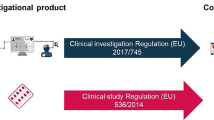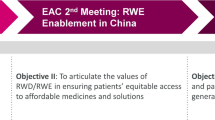Abstract
The pharmaceutical industry has developed many innovative medicines, which are able to extend the life expectancy of patients to increase their quality of life and often to reduce expenditures in the health care sector as a whole. Although these medicines are available in principle for all eligible patients throughout Europe, not everyone receives adequate treatment. There is a huge difference between a possible optimal treatment and the treatment delivered to the patient. In some cases patients are not treated at all; in some cases they only receive outdated medicines (e.g. with lower effectiveness and/or more severe sideeffects); and in some cases the prescribed dosages of the innovative drugs are too low to be effective. This study gives an overview of the shortfalls in provision of state-of-the-art medicines in selected European countries for about 20 of the most relevant diseases.
The following five different groups of factors can be identified as leading to this insufficient diffusion of medicines and are discussed in this text: (i) patient-related factors; (ii) healthcare professional-related factors; (iii) industry-related factors; (iv) system-related (long-term) factors; and (v) policy-related (short-term) factors. It must be clear that these shortages are not isolated cases but general trends in Europe, which have to be discussed in public.





Similar content being viewed by others
References
LEGOS. Université Paris-Dauphine, Novembre 2000
Lichtenberg F. Do (more and better) drugs keep people out of hospitals? Washington, DC: American Economic Association, 1996
Lichtenberg F. The effect of pharmaceutical utilisation and innovation on hospitalisation and mortality. Working paper 5418, Cambridge, MA: National Bureau of Economic Research, 1996
Health Econ AG. Produktivitätsanalyse des Arzneimitteleinsatzes in Deutschland, Basel, März 2000
Frech T, Miller R. The productivity of health care and pharmaceuticals: An international comparison. Washington DC: American Enterprise Institute, 1998
Lichtenberg F. Are the benefits of newer drugs worth their cost? Evidence from the 1996 MEPS. Health Affairs 2001; 20: 5
Horn SD et al. The managed care outcomes project, 1996
Schöffski O. Diffusion of medicines in Europe, Burgdorf, 2002
Psyma GmbH (Working Party for Psychological Market Analysis), Nuremberg
Konietzko N, Fabel H. Pulmonary White Paper, Stuttgart. 2000
Pfeil T et al. Sozioökonomische Relevanz akuter Exacerbationen der chronischen Bronchitis in der BRD: eine repräsentative Krankheitskostenstudie, Institut für Empirische Gesundheitsökonomie
Lewin Group. Value of medicines review database. Study for the Pharmaceutical Partners for Better Healthcare, March 1999
Lepine J-P, Gastpar M, Mendlewitz J, Tylee A. Depression in the community: The first pan-European study DEPRES (Depression Research in European Society). International Clinical Pschopharmacology, 1997; 12: 19–29
Institute of Health Statistics (IMS)
Silvera L, Simon D, Trutt B, Blanchon B, Parmentier M, Hecquard P. Description des diabétiques de type 2 d’Ile de France âgés de 70 ans au plus, Diabetes Metab, 2000; 26 (suppl. 6): 69–76
CODE 2 study (Costs of diabetes in Europe, type 2), 1999
Swingler RJ, Davidson DL, Roberts RC, Moulding F. The cost of epilepsy in patients attending a specialist epilepsy service, Seizure, 1994; 3: 115–20
Ministére de l’Emploi et de la Solidarité. Plan National de Lutte contre l’Hépatite C 1999–2002
Bellis MA, McCullagh J, Thomson R, Regan D, Syed Q, Kelly T. Inequality in funding for AIDS across England threatens regional services, Br Med J 1997; 315: 950–1
National Kidney Federation. Patient satisfaction study, London, 1998
Estimation sur la base des données de ventes (GERS)
Avis de la Commission de la transparence BETAFERON, AFSSAPS, 05 mai 1999
Based on SE Wales Breast Cancer Guidelines
Krappweis J, Rentsch A, Schwarz U, Krobot KJ, Kirch W. Outpatient costs of osteoporosis in a national insurance population. Clinical Therapeutics 1999; 21 (1): 2001–14
Pollhäne W, Minne, HW. Diagnostik und Therapie der Osteoporose. Notfall Medizin 36: 39–43
Larue F, Colleau SM, Brasseut L, Cleeland CS. Multicenter study of cancer pain and its treatment in France. BMJ 1995; 310:, 1034–37
Larue F, Colleau SM, Fontaine A, Brasseur L. Oncologists and the primary care physicians’ attitude toward pain control and morphine prescribing in France. Cancer 1995; 76: 2375–2382
Ministére de l’Emploi et de la Solidarité. Plan triennal de lutte contre da douleur 1998–2000
Study with 686 psychiatrists in nine European countries. Cohn and Wolf Market Research Agency, 1999
Institute of Medical Statistics (IMS Health), Die Helicobacter pylori-Eridikations-Therapie: Wie ist die aktuelle Situation in den deutschen Praxen, Frankfurt am Main, Februar 1999
Grol R, Dalhuijsen J, Thomas S, Veld C, Rutten G, Mokkink H. Attributes of clinical guidelines that influence use of guidelines in general practice: an observational study. British Medical Journal 1998; 317: 858–61
Feachem RGA, Sekhri NK, White KL. Getting more for their dollar: a comparison of the NHS with California’s Kaiser Permanente. British Medical Journal 2002; 324: 135–41
LEGOS. Université Paris-Dauphine, Novembre 2000
Acknowledgements
This study was supported by an unrestricted grant from the European Federation of Pharmaceutical Industries and Associations (EFPIA), Brussels, Belgium.
Author information
Authors and Affiliations
Rights and permissions
About this article
Cite this article
Schöffski, O. Impediments to the diffusion of innovative medicines in Europe. Pharmacoeconomic 22 (Suppl 2), 51–64 (2004). https://doi.org/10.2165/00019053-200422002-00006
Published:
Issue Date:
DOI: https://doi.org/10.2165/00019053-200422002-00006




